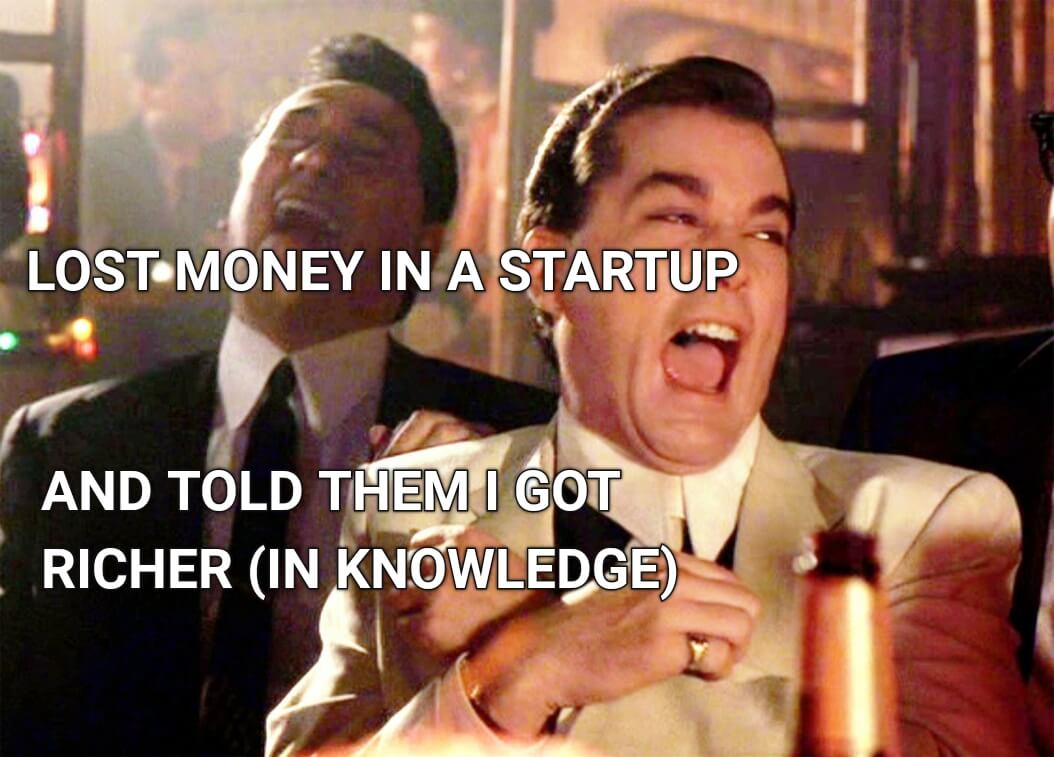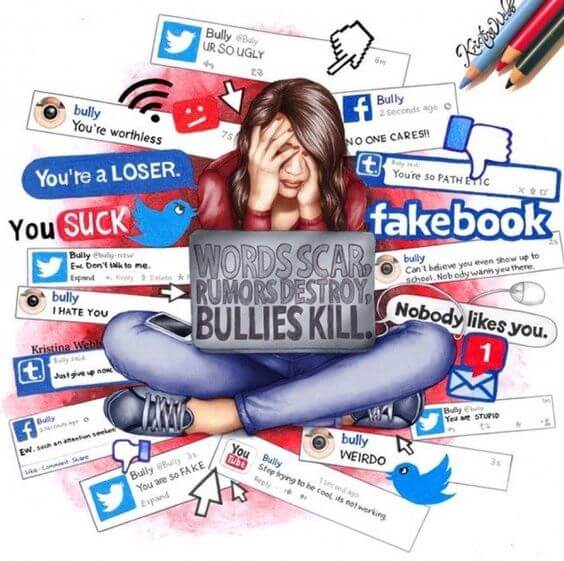Perfect timing to lose 15k💸 and share it with you

I have a plan: to retire by my 50s at most. "Retiring" for me means "not answering to anyone other than myself and my family". I don't want to stop producing value. I just want to own the value I create.
A big part of the plan is investing in the stock. Still, another part of it is producing alternative incomes from side businesses, or "muse," as Tim Ferris would call. I have been experimenting with some of these side businesses in the past 3 years:
- One went completely bankrupt.
- One did not make me feel happy, but I managed to sell it.
- The last one is still being built.
The sum made me lose money, so was it worth it?
Investing in a scrappy Startup to get a passive income is a dumb idea.
I lost 15k in that idea. The Startup was an on-demand Scooter app, a kind of "Lime" competitor. Terrible business, but I liked the twitch they made to the business model:
- Small investors like myself buy scooters.
- Cosmic (the Startup) manages the tech platform and charges a fee for it.
- Third-party partners manage the fleet operations and maintenance in exchange for a cut of the scooter's revenues each generates.
After the tech and operation cut, the rest goes to the scooter owner (aka me if my scooter was used). The numbers looked great. I even saw the revenue rising to exciting levels in the first month of operation. Then COVID struck... nobody used the scooters for at least 6 months, the startup finance got strained, they left the country. I was stuck with 20 clunky scooters with shitty IoT connections. My wife can't stand the sight of these scooters in my backyard anymore.
What did I learn?
- Never ever invest in an early-stage startup again unless it represents a very, very little portion of your portfolio. A good alternative is investing in small venture funds that invest in dozens of early-stage startups, so you don't get too exposed to the failure of one.
- I also learned to better read the hidden incentives behind a business model. The model was flawed and started generating problems even before the pandemic. The fleet management partners also bought scooters and started prioritizing their own from the ones owned by small investors like me. So my scooters rapidly ended in maintenance for long periods. Look for each actor incentive and value they get for a business. There should be a flywheel effect where each party value grows in sync.
Mono product e-commerce without competing with Amazon: a good idea but an underestimated effort.
About 3 years ago, I bought a small US-based e-commerce of Programmable robots for K12 STEM curriculums.
The Good: most of our clients were US schools, which still astoundingly buy their stuff writing checks. It means they can't buy it on Amazon. This was our "unfair advantage."
The Bad: we were not the only one selling these robots, and the margin was less than expected because schools asked for multiple quotes and always went for the cheapest. Plus, having a US-based "LLC" had far more complexity and cost than I anticipated.
The ugly: I thought this could have been an "autopilot" kind of business early on, which was a mistake. It's like flying a glider; you need a good old diesel-powered plane to put it in the sky. I did not have enough time to be that plane pulling the glider.
What did I learn?
- I discovered the "behind the scene" of 2 of the companies I invest in: Shopify and Amazon (both of which made our life impossible for managing the business from abroad). I understand a bit more about each player's incentives in their ecosystems.
- I learned how to better value e-commerce from its fundamentals. I also learned that having multiple niche e-commerce can help get scale faster.
- I learned to buy a business on the Shopify Exchange marketplace, or how not to buy a business.
- I learned how to sell a business online, fascinating stuff. We sold the e-commerce in a week through an online business marketplace called Flippa. I was impressed by how easy and intelligent the process was.
The third time's the charm: the one ingredient for success.
This one thing is "the grit".
"The grit is a mix of passion and perseverance for long term goals". According to psychologist Angela Duckworth, this is the most critical thing successful entrepreneurs have in common
I lacked passion for my e-commerce venture, I was not enjoying it. I did have perseverance, though. Else, I would not have been able to keep it on track for 3 years and sell it.
My third attempt, building and monetizing an investment community, has all the ingredients. I get really passionate about understanding what a company is about and how it drives value. Plus, perseverance has always been there; otherwise, I would not have been writing this newsletter for the past year without financial retribution.
Compounding my learnings for long-term success as an investor
So was it all worth it? Time will tell; it depends on how much of this experience can be transferred into future returns through knowledge. I need to make sure to apply my learnings to my current project and stock market investing. I have built into my checklist some of that transfer through the following items:
- Hidden or perverse incentives in a business model check. This is also a good question to make sure you get a deep understanding of the business you are investing in.
- Make sure to invest in companies where there the people behind it have the "grit". My checklist looks for proxies, such as if the founder or family is involved, how many shares do insiders possess, and how good of a culture business leaders manage to positively contaminate (through Glassdoor ratings).
- Never concentrate your investment portfolio on a couple of young businesses (I am already positive my portfolio checks this mark). Also, make sure the company you invest in is not too concentrated on a few clients.
The Rookie investor conducts this kind of scoring every day for a shortlist of 200 promising stocks. If you want to find the score for other stocks just search here.
Guess which company checks all 3 boxes and more?
Grit
Pinterest's (PINS) CEO and founder owns more than 6% of the company, has a 90% approval rate on Glassdoor. His grit is easily communicated with this powerful company mission: "bring everyone the inspiration to create a life they love".
Perverse incentives in the social media industry
Pinterest has also been successful at staying away from the misuse of its platform for political or misinformation purposes. This is not a small feat in social media, which speaks a lot about their ability to better control perverse incentives between increasing engagement and promoting inspiring content. While TikTok is plagued with questionable content for younger users, Instagram makes teenagers feel bad about themselves. Facebook, meanwhile, keeps getting slammed for its ill-gotten moderation efforts. Twitter comments instead are packed with hatred. How does Pinterest manage to keep its platform "cleaner"? Its CEO puts it this way: "Pinterest is not the place to read the news or debate politics with your cousin or compare yourself to other people. It is a positive place to be inspired and get ideas in your future life". With 90+% of site searches about products, it's a lot easier for Pinterest to align incentives between creators, brands and consumers and build a cleaner ecosystem that provides more value to each of its participants.

Pinterest is a buy for many other reasons too.
- Value: its price to free cash flow is now lower than all of its social media friends like SNAP and TWTR. If its PFCF were to go to 27 like Facebook, in the next 5 years, it would need to grow at 33% CAGR, which gives us a decent safety margin compared to the triple-digit growth it is now showing.
- Moat: PINS benefits from the typical network effect as all the social media companies that achieve critical mass. Plus, it just reached a 10+% operating margin, which is higher than the interactive media industry and makes it a low-cost advantage.
- Optionality: All its revenues now come from advertising, but they will begin testing native checkout soon, which could generate a new business model. Plus, only 17% of its revenue is generated outside the US. A lot of organic growth is still to come from abroad. ARPU by users is still low compared to more established social media firms.
- Financial strength: PINS has been steadily increasing its returns on invested capital for the past 7 years and is now well above 20%. Its Free cash flow has also been growing fast. It is now well-positioned to keep making intelligent acquisitions and expand its offerings.
- The total PINS score is 13.5 on my framework, in the top 25%
Are you enjoying this content? If yes then please support me to keep going, by subscribing for just $10/month, and get access to a guaranteed weekly newsletter + exclusive access to our Slack workspace.
Risks
PINS share price lost 50% of its value since February, mainly because of decreasing monthly active users. PINS just reported earnings today and MAU is still decreasing, but monetization keeps increasing thanks to positive ARPU trends. Longer-term, MAU will need to grow again. According to management, this drop in MAU is caused by GenZ getting back outside en spending less time on house and cooking projects.
Pinterest is actively investing in its ecosystem to revert the trend.
In just the past few weeks, we've released a number of new features to execute on a strategy; a new Watch Tab, where folks can watch a vertical feed of full screen Idea Pins; a new feature called Takes, where users can publish their own personal Pin and Idea Pin, and encourage others to try the same ideas; a new rewards program to pay creators for sharing their passions with their audience; and most recently, Pinterest TV, which offers live original episodes featuring creators. And this is just the beginning. This is a long-term investment for us into the future of inspiring lifestyle media. (Pinterest´s CEO during Q3 earnings call)
These are a lot of new features to bring back more creators and more users. I am buying the dip and adding it to my Pinterest position as I am writing this.
The author of this post owns shares of PINS. The Rookie Investor recommends PINS. The Rookie Investor has a disclosure policy. This article by The Rookie Investor is not financial advice as it does not take account of your objectives, or your financial situation. We aim to bring you long-term focused analysis driven by fundamental data. Note that our analysis may not factor in the latest price-sensitive company announcements or qualitative material.
Have feedback on this article? Concerned about the content? Get in touch with us directly.